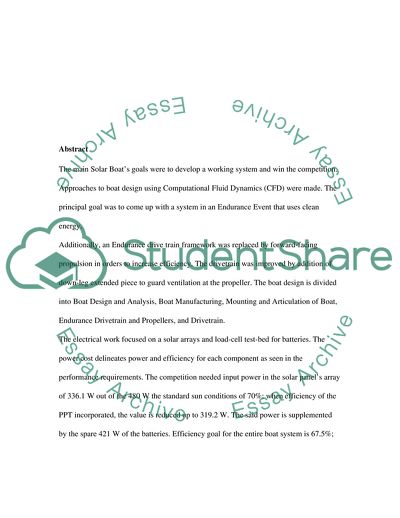Cite this document
(Design of Solar Boat for Competition Case Study Example | Topics and Well Written Essays - 8750 words - 1, n.d.)
Design of Solar Boat for Competition Case Study Example | Topics and Well Written Essays - 8750 words - 1. https://studentshare.org/design-technology/1850389-design-of-solar-boat-for-competition
Design of Solar Boat for Competition Case Study Example | Topics and Well Written Essays - 8750 words - 1. https://studentshare.org/design-technology/1850389-design-of-solar-boat-for-competition
(Design of Solar Boat for Competition Case Study Example | Topics and Well Written Essays - 8750 Words - 1)
Design of Solar Boat for Competition Case Study Example | Topics and Well Written Essays - 8750 Words - 1. https://studentshare.org/design-technology/1850389-design-of-solar-boat-for-competition.
Design of Solar Boat for Competition Case Study Example | Topics and Well Written Essays - 8750 Words - 1. https://studentshare.org/design-technology/1850389-design-of-solar-boat-for-competition.
“Design of Solar Boat for Competition Case Study Example | Topics and Well Written Essays - 8750 Words - 1”. https://studentshare.org/design-technology/1850389-design-of-solar-boat-for-competition.


